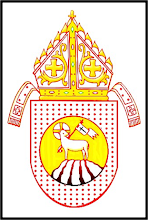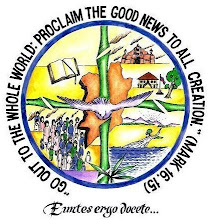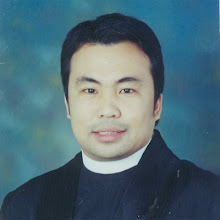In a catechism class, a catechist asked the students: “Why do we need to keep silent during the Mass?” One student replied with conviction: “We are asked to keep quiet during the Mass so as not to wake up those who are sleeping during the Mass.”
Catechesis is necessary in the formation of the faith. But faith in order to be completed needs to be nourished by the Word of God and the Sacraments and the prayer life of each baptized. Catechesis culminates in the celebration of the liturgy and especially in the celebration of the Holy Eucharist. This is what the Constitution on the Liturgy wants to say when it declares that the liturgy is the “source and the summit of the Christian life.” It also substantiates this declaration by saying that “every liturgical celebration, because it is an action of Christ the Priest and of his Body, which is the Church, is a sacred action surpassing all others. No other action of the Church can equal its efficacy by the same title and to the same degree.” (SC 7)
 We cannot deny the fact that there are many components to the process of the growth of faith. Our work for the building up of a just society, the education of our people, and the social action of the Church, all of these are important aspects of the healthy growth in faith. But, in all of these the Church would like to remind us that these should lead our people in the praise of God and their sanctification, i.e. the liturgy. It is here that the mystery of Christ and our salvation become clearly manifested.
We cannot deny the fact that there are many components to the process of the growth of faith. Our work for the building up of a just society, the education of our people, and the social action of the Church, all of these are important aspects of the healthy growth in faith. But, in all of these the Church would like to remind us that these should lead our people in the praise of God and their sanctification, i.e. the liturgy. It is here that the mystery of Christ and our salvation become clearly manifested.Such an end is always the point of the official teachings of the Church. The liturgy and especially the Holy Eucharist are not addenda to the formation of faith but the very end towards which Catechesis exists. “Catechesis should therefore be at the service of active, conscious and genuine participation in the Church’s liturgy, not only by explaining the meaning of the rites, but also by training the faithful for prayer, for thanksgiving, for penance, for confident prayer of petition, for a sense of community, giving them a proper understanding of the symbols- all of which are necessary for a proper liturgical life.
The Directory for Masses with Children is a document that has attempted to address the issue of the relationship of Catechesis and the celebration of the Eucharist and to give guidelines to those who are in charge of the preparation of the liturgy for children and for catechists. The Directory tries to respond to the problem arising from the fact that the liturgical celebrations “cannot fully exercise their inherent pedagogical force upon children” (no.2).
The liturgy is aware of the presence of children but it scarcely addresses itself to them. The signs, symbols and its language are directed normally to the adult members of the assembly. Sometimes, the presence of children if not causing irritation for some, even can be a cause of nuisance for others.
The Directory has an introduction and three chapters. The first chapter, which is basic, discusses the different ways in which children are introduced to the Eucharistic liturgy, especially through catechesis. The second chapter deals with Masses at which a good number of children take part together with a good number of adults. The normal situations of these would be Sundays and holidays. The third chapter deals with Masses with children in which only few adults are present. This chapter addresses the issues on ministries, place and time of celebration, preparation, singing and music, gestures and visual elements, silence and the different parts of the Mass that require special care.
Principles of the Directory
This is the first liturgy which has been shaped for the use of children. This is supported by the desire of the Church to adapt the liturgy to the needs of various groups (SC 38). This is also the fruit of the Synod of Bishops in 1967
Children in this document refer to those who have not yet entered the period of preadolescence, between the ages of nine and twelve.
But in reality the principles taken in this document can also be applied to other age brackets as well.
1. Intelligibility of the Liturgy
The Directory recognizes the fact that even if the liturgy has been celebrated in the vernacular still there are words and signs which are not easily understood by children.
Sometimes even the adults do not understand the signs and the symbols used in the Eucharist. The historical and cultural settings in which these evolved may not be easily unravelled by the faithful. The problem boils down to the tension between the classical and the popular, the liturgist’s creation in time and the people’s capacity to assimilate them. The truth is, the problem is not only with children but it is also with adults.
Understanding of the liturgy is a basic tenet in Vatican II’s program of liturgical reform. The Constitution on Liturgy demands that the rites “should be within the people’s power of comprehension and as a rule not require explanation” (art 34). This is the foundation of the devout and active participation; the understanding of what happens and the meaning of the liturgical celebration.
The Directory insists on the need to impart Eucharistic catechesis to children: “even in the case of children, the liturgy itself always exerts its own inherent power to instruct” (no. 12). Example: the presidential prayers of the Mass.
But the fact remains that there are still elements in the celebration of the Eucharist which are difficult to understand: the theology of the sacrifice and meal. The Eucharistic Prayer needs to be explained (no. 52). This is somewhat a tall order. This is also the reason for the creation of the new Eucharistic Prayers for children. The style is simple suited to the understanding of the children (no. 5). The work of translations must make this true.
Even if the whole effort is to make this simple, the Directory is not unaware of some dangers in this regard: “Although a simpler style of language was adopted, the authors always had in mind the importance of avoiding the danger of childish language, which would jeopardize the dignity of the Eucharistic celebration, especially if it affected the words to be said by the celebrant himself” (no. 6).
The principle of intelligibility includes the readings and the explanation of the word of God. This includes the choice of the readings and the homily.
2. Towards Masses with Adults
“It is always necessary to keep in mind that these Eucharistic celebrations must lead children toward the celebration of Mass with adults, especially the Masses at which the Christian community must come together on Sundays” (no.21). Those who prepare and organize Masses with children should not lose sight of the fact that the children grow to maturity as they are gradually introduced into the cultural world of the adult members of the society.
This is also applicable to all other ecclesial and age groups. The Constitution on Liturgy (art. 38) encourages this but it is to avoid the creation of ecclesiole or privilege, but to serve the faithful’s particular needs to deepen the Christian life in accord with the requirements and capacities of the members of the groups.”
If this is so, then the Masses with children “should not be entirely special rites markedly different from the Order of Mass celebrated with a congregation” (no.21). The effort here “could not be a matter of creating some entirely special rite but rather of retaining, shortening, or omitting some elements or of making a better selection of text.” (no.3)
Pursuing the principle that children’s Masses should lead to adult’s Masses, the Directory states that “some rites and texts should never be adapted for children lest the difference between Masses with children and the Masses with adults become too pronounced” (no. 38) This means that the Roman Missal is the norm on which the Masses with children are to be based.
The Conference of Bishops is required to make adaptations of the Supplement to the Directory. If there is none yet then the following principles are to be our guides: first, every Mass with children will have to be prepared individually, taking into account the particular needs and situation of the group of children. Second, it is necessary to be guided by the operative principle that for the preparation of Masses with children the current Order of Mass is normative.
It is clear that the Directory proposes an adaptation of the existing Order of the Mass and not creative liturgies for children. But the work of adaptation is clearly requiring a great deal of creativity.
3. Active Participation
The Directory states that “the principles of active and conscious participation are in a sense even more significant for Masses celebrated with children. Every effort should therefore be made to increase this participation and to make it more intense” (no.22). This is the reason for all the efforts to adapt the celebration of the Mass for children. We see this in the various ministries and offices during Mass: Mass servers, readers, and song leaders; the place of singing and musical instruments in the celebration; the use of gestures and the visual elements; the observance of silence; and the numerous acclamations.
Example: Invite children to take part in preparing and ornamenting the place where Mass will be celebrated, and prepare the chalice with the paten and the cruets (no. 29).
During the celebration itself: the various ways of proclamation of the word of God (no. 47). The question of dramatization and rhythmic swaying is not explicitly addressed but we can say that these do not go contrary to this exhortation of the document “in view of the nature of the liturgy as an activity of the entire person and in view of the psychology of children, participation by means of gesture and posture should be strongly encouraged in Masses with children, with due regard for age and customs” (no. 33).
There are many possibilities for active participation. We should avoid the tendency to make “active” to “super-active”, and “participation” to an excuse of liturgy worship. The caution is given to us: “In all this, it should be kept in mind that external activities will be fruitless and even harmful if they do not serve the internal participation of the children” (no. 22).
4. Instilling Eucharistic Values
There is a close link between intelligibility and catechesis. When people find the Mass meaningless it usually is perceived as a religious activity disconnected from their life’s concerns and realities. That is why the Directory warns us that the liturgical formation of children must also be connected to their general education as Christians and humans: “indeed it would be harmful if their liturgical formation lacked such a basis” (no. 8).
The values that the celebration of the Eucharist promote: community spirit, hospitality, capacity to listen and to seek forgiveness, sense of gratitude, generosity to the point of sacrifice, leadership, family and friendly meals and festive celebration. These human values are enriched in our celebrations, giving them Christian meaning.
QUESTIONS FOR GROUP DISCUSSION
1. How well acquainted are you with the Directory for Masses with Children?
2. What are the important elements in the Directory that can help you in your ministry as agents of the liturgy?
3. What are the problems you have encountered in the preparation for Masses with children?
4. What are the qualities of an effective, meaningful and beautiful celebration of Masses with children?



No comments:
Post a Comment